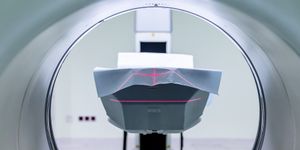High-speed 3D Printer to Revolutionize Manufacturing
Two significant hurdles in front of the fast expansion of three-dimensional (3D) printers are speed and scale.
In a recently published study, a team of chemical engineers at Northwestern University reported that their stereolithography-based 3D printer tackles these two challenges heads-on, allowing fast and high-volume output.
Stereolithography (SLA) employs photo-solidification of resin to create three-dimensional polymer parts in a layer-by-layer fashion. Most SLA printers use an ultraviolet laser to draw a pre-programmed shape onto the surface layer of the photoactive polymer and cure it. But their printing efficiency is restricted by the build-up of heat, a byproduct from polymerization, which also limits the size of the printed object.
The Northwestern team implements an innovative design in their 3D printer: instead of having a poorly-ventilating solid layer, the printer constantly circulates a liquid interface (think of it as a liquid form of Teflon) between the laser window and polymer resin. The flow of fluorinated oil reduces the adhesive forces between the interface and the resin, which enables the printer to operate much more efficiently.
In the proof-of-concept study, the team managed to achieve a vertical print rate of over 430 millimeters and a volumetric throughput of 100 liters within an hour. The researchers hope that their invention can potentially enable commercial-scale manufacturing in less than two years.
This latest research is published in the journal Science.
Source: Seeker via Youtube








